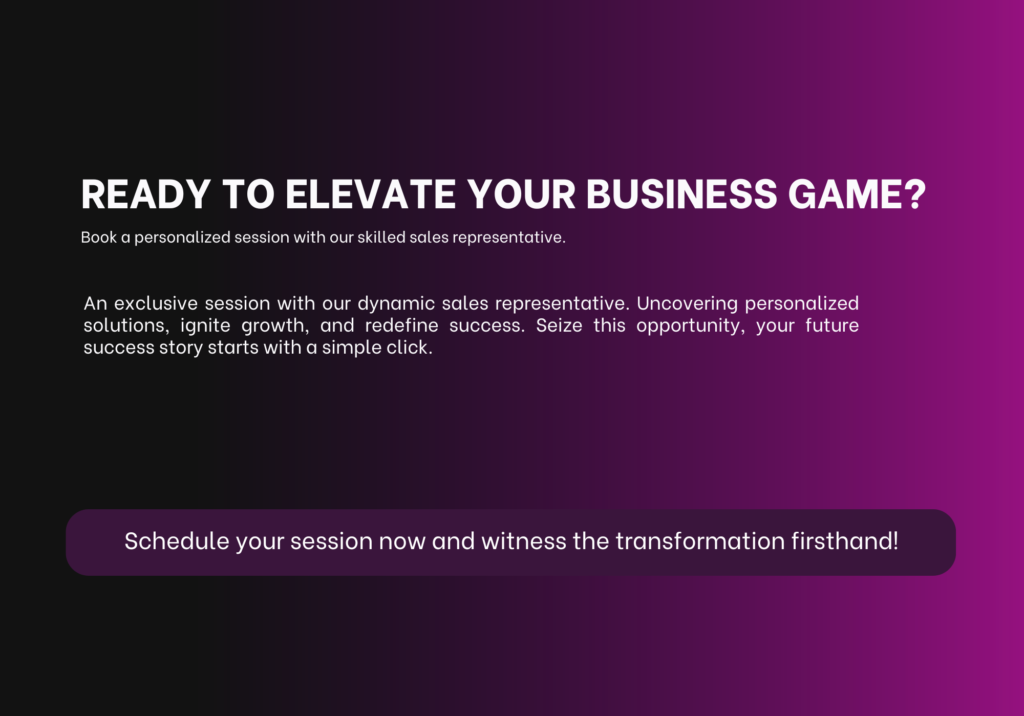Effective lead creation is essential. Although lead generation tactics and resources may differ,
the end objectives are the same in all sectors. Let’s examine these important goals and how
they affect a company’s overall performance.
Boosting Revenue
1. Knowledge:
When potential clients become aware of your product or service, they are in the
awareness stage.
2. Interest:
During this phase, customers actively look for answers to their issues and express
interest in your offering.
3. Choice:
Prospects consider competing options against your product or service during the
decision-making phase. They still need to respond to a few more questions, but they are nearly
ready to purchase.
4. Action:
When a prospect makes a purchase, they enter the action stage.
The main objective of lead generation is to increase sales. You can generate conversions by
drawing in qualified leads, or people who have expressed sincere interest in your goods or
services. The more leads you produce, the more likely it is that they will become paying clients,
which will eventually increase your revenue. This fundamental goal emphasises how crucial it is
to target the appropriate audience and use tactics that appeal to them.
Expanding Your Clientele
Building a strong client base over time is the goal of lead generation, not just making quick
purchases. Businesses can increase their audience and guarantee a continual flow of possible
clients for upcoming sales initiatives by regularly interacting with new prospects. In addition to
improving the company’s market presence, this continuous activity lays the groundwork for
enduring connections that may result in return business.
Increasing Recognition of the Brand
Increasing brand visibility is also largely dependent on efficient lead creation. Reaching out to
possible leads helps you build your brand in the eyes of your target market in addition to
promoting your products. Customers are more likely to recognise and trust brands that are more
well-known. This trust is essential since it may set your company apart from competitors and
frequently influences purchasing decisions.
Developing Connections
Developing a bond with leads is crucial to creating client loyalty. By means of custom
correspondence and interaction, companies may cultivate these connections, establishing a
bond that may eventually result in recurring business and recommendations. Through the use of
strategies like newsletters, follow-up emails, and special offers, prospective clients can be kept
interested and informed at every stage of the purchasing process.
Finding Market Trends
Lead data analysis offers insights into consumer preferences and industry trends. Your product
development and marketing tactics can be informed by an understanding of what draws leads,
which can help you stay ahead of the competition and adjust to shifting consumer expectations.
In the fast-paced world of today, when customer tastes can change drastically, this flexibility is
essential.
Increasing Conversion Rates
Overall conversion rates are increased by concentrating on high-quality leads. You may lower
your cost per acquisition and increase the effectiveness of your marketing by optimising your
lead generation procedures and drawing in more likely-to-convert prospects. Your resources are
employed more efficiently when you prioritise quality over quantity, which produces superior
results.
Viewers
Effective audience segmentation made possible by lead generation enables companies to target
particular groups with their marketing initiatives. Your messaging’s efficacy and relevancy can
be greatly increased with this focused strategy, which will improve engagement and increase
conversion rates. Businesses can develop personalized ads that more effectively connect with
each audience by knowing the distinct requirements and habits of various market segments.
Making the Most of ROI
Maximizing return on investment is the ultimate goal of effective lead generation strategies.
Businesses can make the most of their resources and guarantee that their marketing initiatives
produce the greatest returns by carefully producing leads that convert. This emphasis on return
on investment not only supports ongoing development and innovation in lead generation tactics,
but it also serves as justification for marketing expenditures.
Creating a Long-Term Sales Pipeline
Frequent lead creation ensures continuous sales chances by encouraging a steady flow of
prospects. Long-term success depends on having a stable sales pipeline, which gives
companies the edge they need to prosper in a market that is always changing. Businesses can
more accurately plan and forecast because of this dependability, which helps them match their
expansion plans with consumer needs.
Analytics and Technology
Technology and analytics in digital transformation are essential for optimising lead-generation
initiatives. Data analytics, marketing automation platforms, and CRM systems are examples of
tools that help improve targeting and expedite procedures. Businesses can improve their
strategy, make data-driven decisions that increase overall effectiveness, and obtain deeper
insights about lead behaviour by utilising these tools.
Lead generation’s ultimate objectives go far beyond merely closing deals. Through a strategic
emphasis on relationship-building, brand awareness, and market dynamics, companies can
cultivate long-term success and sustainable growth. You must invest in effective lead-generation
tactics. Your lead generation strategy should adapt to changing marketplaces in order to stay
flexible and attentive to audience demands.


